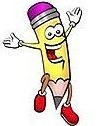By the time they are finished the third grade, children should be able to:
Place Value / Basic Operations
- add or subtract numbers within 1000 fluently
- use place value to round whole numbers to the nearest 10 or 100
- multiply 1-digit numbers using multiples of 10 from 10 – 90
Fractions
- understand fractions as numbers on a number line
- recognize and create simple equivalent fractions
- compare two fractions with the same numerator or denominator
- recognize that comparisons are valid only when referring to the same whole
- separate shapes into parts with equal area and convey each part as a unit fraction
Algebraic Thinking
- represent and solve number sentences or word problems involving multiplication and/or division
- multiply a single digit by a multiple of 10
- understand the properties of multiplication and its relationship to division
- multiply and divide within 100 (using fact families up to 10)
- solve number and word problems using the four basic operations
- identify and explain arithmetic patterns
Measurement
- tell time to the nearest minute
- measure time intervals
- solve addition and subtraction time interval problems on a number line
- estimate and measure volume and mass using grams, kilograms and litres
- understand concept of area and how it relates to multiplication
- recognize perimeter and how it relates to addition
- solve perimeter and area using closed plane figures (visually) or through word problems
Data Analysis
- draw scaled picture and bar graphs
- represent data sets and solve word problems using picture and bar graphs
- generate data by measuring lengths on a line plot (using whole numbers, halves and fourths)
- connect data on a line plot with fractions on a number line
Geometry / Spatial Sense
- understand that shapes in different categories may share attributes
- associate rhombuses, rectangles and squares as quadrilaterals
- distinguish between linear measurement and area
